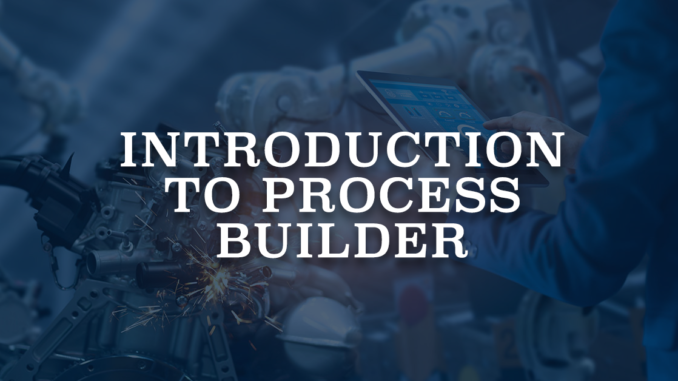
Process Builder is an automation tool that allows you to do various actions without writing even a single line of code. Its user friendly and clear UI makes it easier to build and understand the processes. It runs automatically (either immediately or scheduled) when the specified criteria is met. Process Builder allows you to control the order of actions or evaluate the criteria for a record.
Supported Actions:
- Create a Record: Allows you to create new records.
- Update Records: Allows you to update multiple records that are related to the record that started the process.
- Email Alerts: Allows you to send email alerts.
- Submit for Approval: Allows you to submit the record for approval. Only the record that started the process can be submitted.
- Flows: Allows you to call autolaunched flows and pass parameters.
- Apex: Allows you to invoke an Apex class.
- Processes: Allows you to call another process that you built with Process Builder.
- Post to Chatter: Allows you to post on Chatter.
- Quick Actions: Allows you to use existing global or object specific actions that you have in Salesforce.
- Quip: Allows you to create Quip documents, chat rooms, and folders.
- Send Custom Notification: Allows you to send custom notifications to users, groups, queues or to the account team.

Unlike Workflow Rules, Process Builder has version control mechanism, which means that whenever you want to make a change for an activated process, you have to create a new version of it. Only one version can be active but since it keeps the versions of the same process, it is possible to roll back to an older version.
Why to Use Process Builder?
- Easy to setup, easy to understand.
- It can do multiple actions in one process.
- Possibility to add multiple criteria to do if-then statements.
- It can update child and parent records.
- Process Builder supports both immediate and scheduled actions.
Limitations
Like all the features, Process Builder has some limits as well.
- You cannot delete records with Process Builder.
- Limited to the base object, you cannot update unrelated records.
- You cannot send an outbound message without writing a code.
- It cannot have a screen for data entry.
- A process can have 50 versions.
- Process Builder respects the governor limits (for example, the total number of DML statements that can be issued (insert / updates) per transaction is limited to 150).
It is always recommended to have one Process Builder per object.

Leave a Reply